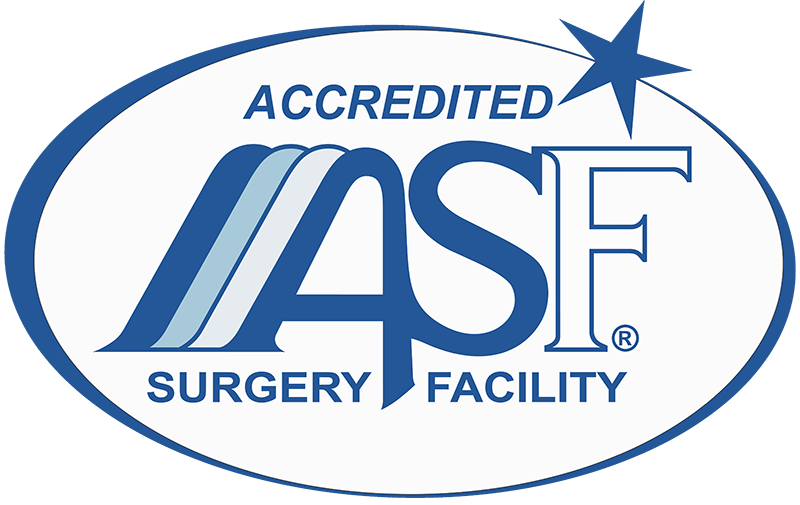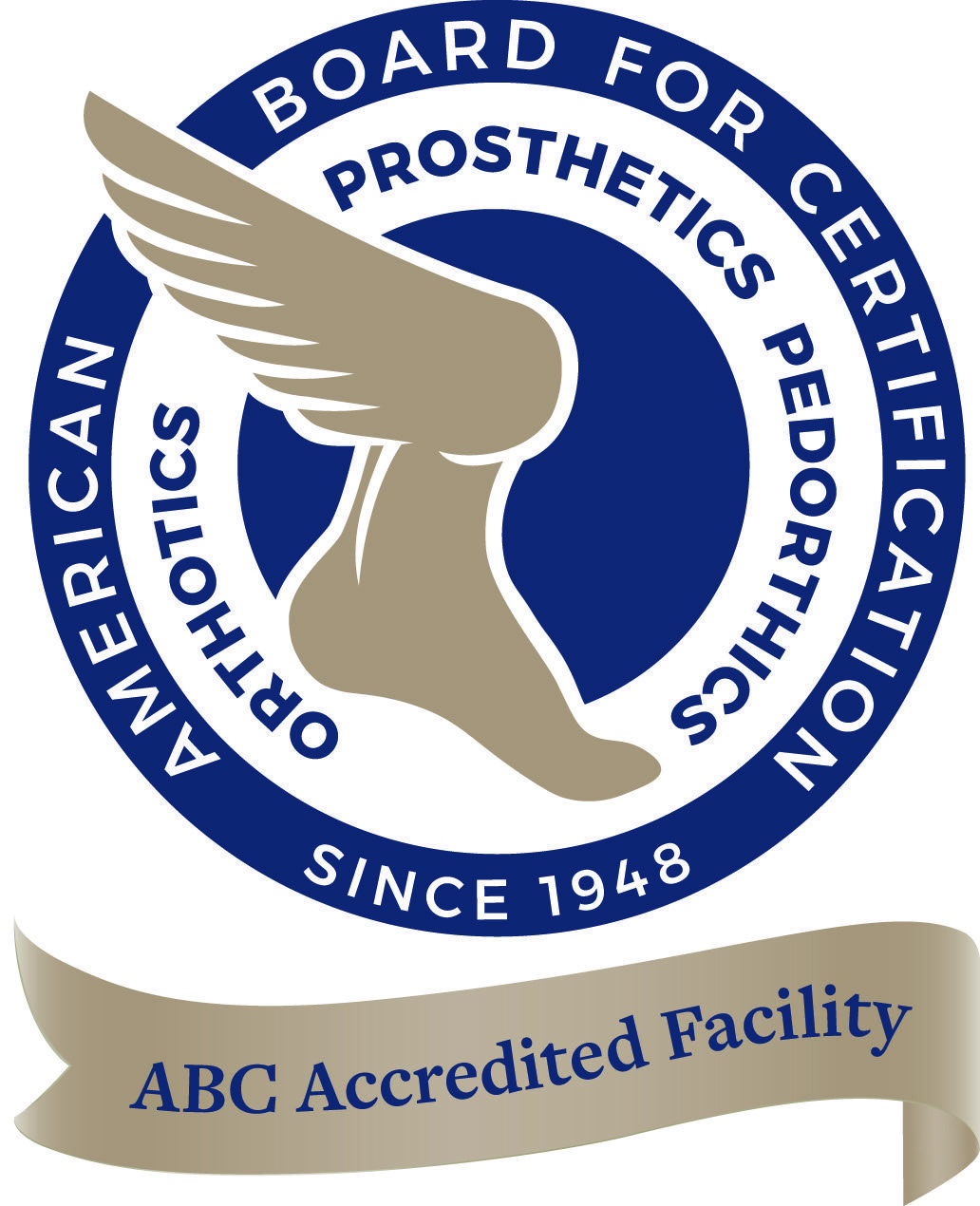Yes, however it is recommended that you make necessary automobile modifications so you can continue to drive safely. If you choose, you can take driving classes and make any changes recommended by the instructor.
Because prosthetic devices are custom fabricated, and have many different components, the process to fit takes time. Once your limb has healed, you will be molded for a test socket, which is the initial device you will be learning to walk on. In about a week, given your availability, you will be able to come in for a fitting. You may have to come back several times, depending on complications, availability, and tolerance to the device.
Once it’s determined that the fit and alignment of the device are appropriate, the device will be “finished.” This process takes about a week. The total process time for the fit of a final prosthesis varies by individual, but an average time frame to consider is about a month.
We recommend that you receive physical therapy before and after receiving your prosthesis. This allows the therapist to provide much-needed pre-prosthetic strengthening and post-prosthetic gait (walking) training. This helps prevent you from forming movement habits that could cause you pain and difficulty with mobility long-term.
Most patients return to normal function within several months after amputation surgery. Recovery rates depend on a timely, comfortable prosthetic fitting, good follow-up care, and the patient’s health and goals.
You should wear the LimbGuard at all times in order to protect the limb and to prevent knee flexion contractures.
In order to reduce swelling, you should wear your shrinker sock at all times. The shrinker decreases swelling and helps shape the residual limb. The swelling will continue to decrease over the next several months as your residual limb shrinks significantly from both fluid loss and muscle inactivity.
Generally, if there are no healing complications, the first fitting occurs approximately six to eight weeks after surgery. Everyone’s body responds differently after surgery, so you will follow up with your surgeon often to ensure your residual limb is completely healed. Once your surgeon decides your limb has healed enough, they will approve you for prosthesis care.
Gradually desensitizing your residual limb is an important step in preparing for your prosthesis. Begin by massaging your limb, then work up to patting it, rubbing it with a towel, and even lightly slapping your residual limb. Preventing contractures (the tightening of the muscles and joints) also makes wearing your prosthesis easier.
The stump and liner should be washed daily to avoid irritation and infection. Mild soap and warm water are recommended. The liner should be cleaned once a week with rubbing alcohol to kill possible bacteria. The prosthesis should be removed before going to bed; do not sleep in it.
Prosthetic components are designed to last from two to four years, depending on how they are used. The socket is also designed to last for two to four years, although most sockets must be replaced sooner as a result of changes in the residual limb such as weight loss, revision surgery or increased activity level.
Cracking and popping noises, excessive hip pain and strain, and issues with alignment are all signs that a prosthesis is reaching the end of its wear cycle.
Generally, you will get two prosthetic devices within the first year of your amputation. The first prosthesis is called a preparatory prosthesis and is usually worn for about three to six months. During this time, your residual limb continues to shrink and becomes less sensitive. Once your residual limb has healed and the size and shape have stabilized, you are ready for a more complex “definitive” prosthesis. Your definitive prosthesis can last for many years, especially if you take proper care of it and have it periodically “checked and serviced” by your prosthetist.
Also, it is very important that you maintain your weight. Even a 10-pound weight gain or loss could affect the prosthetic fitting, which requires adjustments or a new prosthesis.
The weight depends on the components selected. A below knee prosthesis can weigh between 5 to 7 pounds and an above knee prosthesis can weigh between 8 to 12 pounds.
Please see the tips provided by Transportation Security Administration: http://www.tsa.gov
A small gauge needle is used to perform the sclerotherapy injections. Like in other medical procedures using a needle, patients relate the discomfort to an ant bite.
Recovery periods may differ from treatment to treatment. Following sclerotherapy, support stockings are worn on each treated leg. Exercise is a very important part of the healing process: A 20-minute walk or bike ride twice a day is best to keep healing on track and produce the best results.
Many scenarios can cause weakened or damaged veins, but smoking and varicose veins go hand in hand. Most think that the lungs are the only internal body part being damaged from smoking, but the greatest concern should be on the body’s blood flow system – which includes the veins.
The carbon monoxide from smoking (and even breathing in secondhand smoke) damages the thin layer of cells inside the blood vessels which help ensure smooth blood flow within the vessels. When this inside layer becomes damaged, fat and plaque are able to stick to the blood vessel walls, making it weaker, and in turn causing varicose veins to form because of the smoking. Nicotine also does great damage to blood vessels.
We recommend those with varicose veins to stop smoking to avoid complications and surgery. If surgery becomes necessary, call the Vein Center at 804-477-8613 to book a screening.
Surgery involves considerable preparation including general anesthesia, the risk of infection, pain in the affected areas, and a lengthy recovery period. The medical laser technology used in Endovenous Laser Treatments eliminates all of that.
Laser procedures are minimally invasive, meaning that the entry point through which your physician gets the laser fiber to the target area is so small that it does not even require stitches after the procedure. Additionally, the risk of infection is much lower with laser procedures, and there is really no “recovery” to speak of. In fact, you’ll be up and walking as soon as it’s over, able to return to normal activity quickly.
Simply put, a laser is a highly concentrated beam of light. Medical lasers work by delivering this light energy to the targeted tissue with extreme precision so as not to affect the healthy surrounding tissue. From ophthalmology to dermatology, they’ve proven to be safe and effective through years of use in all kinds of medical procedures. In the hands of a skilled physician, lasers offer far less risk and complications than conventional surgery.
Results are typically seen within 4-6 weeks.
You should not experience any recurrence in the veins that have been treated. Follow-up procedures may be desired to obtain optimal aesthetic results.
If you need a prescription refill, please call us at 804-288-1953 during office hours, so that we may review your medical record to make certain that a refill is appropriate, without the benefit of an examination. Narcotics will not be prescribed after office hours.
VSA participates with most major insurance carriers, and as a courtesy to you, our staff will gladly file your insurance claims. Once your insurance carrier has processed your claim, you will be mailed a statement of your account with Vascular Surgery Associates. All balances are due within 30 days unless special financial arrangements have been made with our Patient Account Representative at 804-285-1922.
In many cases, yes. You, the patient, are responsible for determining if a referral is required by your insurance, and if so, for obtaining a referral from your primary care provider prior to the office visit. Your appointment will be rescheduled without the proper referral required by your health insurance company for your office visit.
Our clinic is contracted with every major insurance provider in the state including Medicare and Medicaid. Each insurance policy is unique and our billing staff will discuss your coverage details with you upon your initial evaluation. Our office is very willing to work with our clients to arrange payment plans if your insurance will not cover your device.
You will need the following:
- Insurance card and, if required by your insurance, an insurance referral form, along with the complete address of your insurance carrier
- A list of your current medications to include dosage and frequency
- Copies of your medical records and any test reports that relate to your vascular or general surgery health issue
Each of our physicians has a professional coordinator who will answer your questions or relay your inquiry to the appropriate staff member.
- Bon Secours St. Mary’s Hospital
Gregg L. Londrey, MD, FACS
Frank D. Stoneburner, MD, FACS
Andrew E. Leake, MD
Avik Mukherjee, MD, FACS - Bon Secours Memorial Regional Medical Center
L. Paul Bosher, MD, FACS
Jeff A. Brown, MD, FACS
Andrew E. Leake, MD
W. Andrew Tierney, MD, FACS
- Bon Secours St. Francis Medical Center
Frank D. Stoneburner, MD, FACS
Marc T. Warner, MD, FACS - Henrico Doctors Hospital
Avik Mukherjee, MD, FACS
Andrew E. Leake, MD
No, the staff is responsible for obtaining the necessary authorization for any surgical procedure.
Vascular Surgery Associates participates with most insurance carriers, and we accept Medicare and Medicaid assignment. As a courtesy to you, our staff will gladly file your insurance claim. Once your insurance carrier has processed your claim, you will be mailed a statement of your account. All balances are due in 30 days, unless special arrangements have been made with our Patient Accounts Representative at 804-285-1922. We accept VISA and MasterCard in addition to checks.
Call 804-288-1953. For the convenience of other patients, please provide a 24-hour notice when you find it necessary to change your appointment.
Vascular Surgery Associates accepts insurance from the following providers:
- AARP Medicare
- Aetna HMO, PPO, POS, MC, Medicare Open Plan (PFFS) and Leap
- Anthem BCBS of Virginia (PPO)
- Anthem Healthkeepers (HMO, POS) including Pathway X, Pathway Tiered and CareMore
- Anthem Medicare Smart Value Plus and Medicare Advantage PPO
- Bon Secours Value Network
- CCCPlus plans – Aetna Better Health, Anthem HealthKeepers Plus, Molina, Optima, United, and Virginia Premier Elite Plus
- Cigna Managed Care, Open Access Plus, PPO and CignaConnect
- Humana and Humana Gold
- Medicaid
- Medicare
- Multiplan
- Optima Health and Optima Family Care
- Riverside Pace and Tristate
- Tricare/Champus – Tricare Standard, Tricare for Life, Prime requires referral
- United Healthcare and United Healthcare Medicare
- United Mine Workers Association (UMWA)
- Veterans Affairs
- Virginia Health Network (VHN)
- Virginia Premier – Virginia Premier Preferred, Medicaid and Medicare products
In an urgent situation, please call our office directly at 804-288-1953. During office hours you will be connected to your physician’s coordinator who will handle your call. After office hours, our telephones are automatically forwarded to our medical answering service. They will relay your message to our on-call physician, who will respond to your call.
To ensure your safety and the safety of our staff, please call our office at 804-288-1953 to make certain that our planned schedule has not changed.
Upon scheduling an appointment, you will receive an invitation to create an account in Follow My Health, which is our Patient Portal. Click on the link in the invitation, which will lead you to create an account and fill out the required patient forms prior to your visit. The Follow My Health account will allow you to update medical information and medications, make payments to your account and request an appointment or prescription refill.
If you have an existing account with another physician’s office that uses Follow My Health, your password for our website will need to be the same as your pre-existing password.
To view our updated privacy practices, click here
Yes. Ideally, our prosthetist will meet with you before your surgery to evaluate your mobility and lifestyle expectations post-surgery. In many cases, they can work directly with your surgeon to determine specific surgery techniques that can enhance your ability to utilize a prosthesis.
Your prosthesis is custom-designed to meet your specific needs using advanced and expensive materials and components. Insurance coverage varies widely, but most private insurance plans and Medicare pay a large portion of the charges. The amount billed for devices is calculated using several elements. It includes the evaluation time, casting or measurement process, fitting appointments, cost of materials, and any follow up appointments needed to ensure the proper fit of each device.
Our clinic is contracted with every major insurance provider in the state including Medicare and Medicaid. Each insurance policy is unique and our billing staff will discuss your coverage details with you upon your initial evaluation. Our office is very willing to work with our clients to arrange payment plans if your insurance will not cover your device.
Your prosthesis is made up of many different components selected specifically for you and your lifestyle. The prosthetist begins by taking a series of measurements and a cast of your residual limb. From the cast, a mold is made and used to design a custom socket. Your residual limb fits snugly in the socket which is attached to the other components that make up your prosthesis.
There are also a variety of skin-like coverings that can be used to resemble your other limb as closely as possible.



